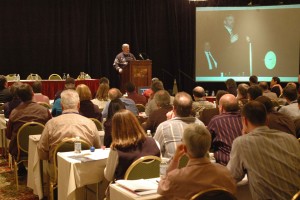 A leader is like a kaleidoscope. Just like a kaleidoscope where a few materials create the myriad patterns we see; a leader works in a similar way. According to Rosabeth Moss Kanter, effective leaders are able to shake up their thinking as though their brains are kaleidoscopes, permitting an array of different patterns out of the same bits of reality.
A leader is like a kaleidoscope. Just like a kaleidoscope where a few materials create the myriad patterns we see; a leader works in a similar way. According to Rosabeth Moss Kanter, effective leaders are able to shake up their thinking as though their brains are kaleidoscopes, permitting an array of different patterns out of the same bits of reality.
Each leader will look at a set of elements, the same ones everyone else sees, but it’s their unique perspective very much like a kaleidoscope that gets them to approach the same problem in their own different way to reassemble those floating bits and pieces into an enticing new possibility. Creativity a word often used to ascribe writers and artists- is a weapon of choice for most leaders.
A leader communicates, co-creates, collaborates and connects with all stakeholders to help them create and identify new seamless opportunities from the given constraints and challenges. A leader’s true kaleidoscopic talent is to turn the challenges into opportunities. A CEO would always keep its people- employees and customers at the core; keep them engaged and manage their expectations, nurture their talent/experience and help raise business profitability. He/she should be enablers to create an organization that maximise the potential of their people.
A true leader possesses the ability to predict and foresee change, in other words, they are the architects of change. Getting the organization prepared for the change is the biggest challenge and that’s what a true leader does successfully. The world has witnessed and experienced the theory of left-brain or right-brain dominance; i.e. a person who is ‘left-brained’ is often said to be more logical, analytical, and objective, while a person who is ‘right-brained’ is said to be more intuitive, thoughtful, and subjective.
Each side of the brain controls different types of thinking. People are said to prefer one type of thinking over the other. Leaders today should be more ‘right-brained’ inclined. It’s all about “what is the next big idea“! A 19th century moralist and historian, Lord Acton said- Power corrupts and absolute power corrupts absolutely. Leadership is a very critical role and is only successful when one understands his/her core values and has the courage to live it in different roles in life.
While some leaders fail, a real leader raises the bar and inspires their teams to do the same. Ethics form the cornerstone for any leadership. An ideal leader would put his/her ethics before the bottom line – and, as a result, they have dedicated teams that would do almost anything for them- ethics and values, lead a leader. There is no such thing as a failed leader; the failure is a character flaw.
A real leader always rises to the occasion and learns from every opportunity. Thus, a leader is truly an amalgamation of three key aspects that ensure the success of any business by leveraging 3 Ps- people, planet and profitability, in the given order and let profit be the derived factor. From Mahatma Gandhi and Winston Churchill, to Martin Luther King and Steve Jobs, and even Superman said- With great power comes great responsibility. There can be as many ways to lead people as there are leaders.
Fortunately, businesspeople have developed useful frameworks that describe the ways that people lead. Culture and goals of an organization determine which leadership style fits the firm. Leaders of a leading software company decided to put employees first; they converted the management and managers of the company to be in the business of enthusing and encouraging and enabling the employees. The only way one can bring innovation to the centre stage of the company to grow faster in the economic turbulent time is to get innovation going at the bottom of the pyramid to employees.
Then can you create an organisation architecture which will create higher value for your customers and hence grow faster. What does the top management need for future success? Not the usual clichés about audacious goals, working in teams and putting customers first, but innovative thought process! An unexpected, refreshing and appropriate observation. How one can increase the market capital 10 times in the coming 5 years – what is that next Big Idea? Incremental growth holds no great prominence.
Leaders should focus on people and cultivate a diverse workforce, both because it’s the right thing to do and because it’s a key element of achieving high performance. Leaders will only taste success if they attract, motivate and retain the best people, and if they deploy those people in the right place, at the right time. In order to survive in this new era, businesses have to focus even harder on their employee; customers; partners and shareholders, which drive profitability and success for the business.
This article was first published on Talent and Diversity Leadership Forum
